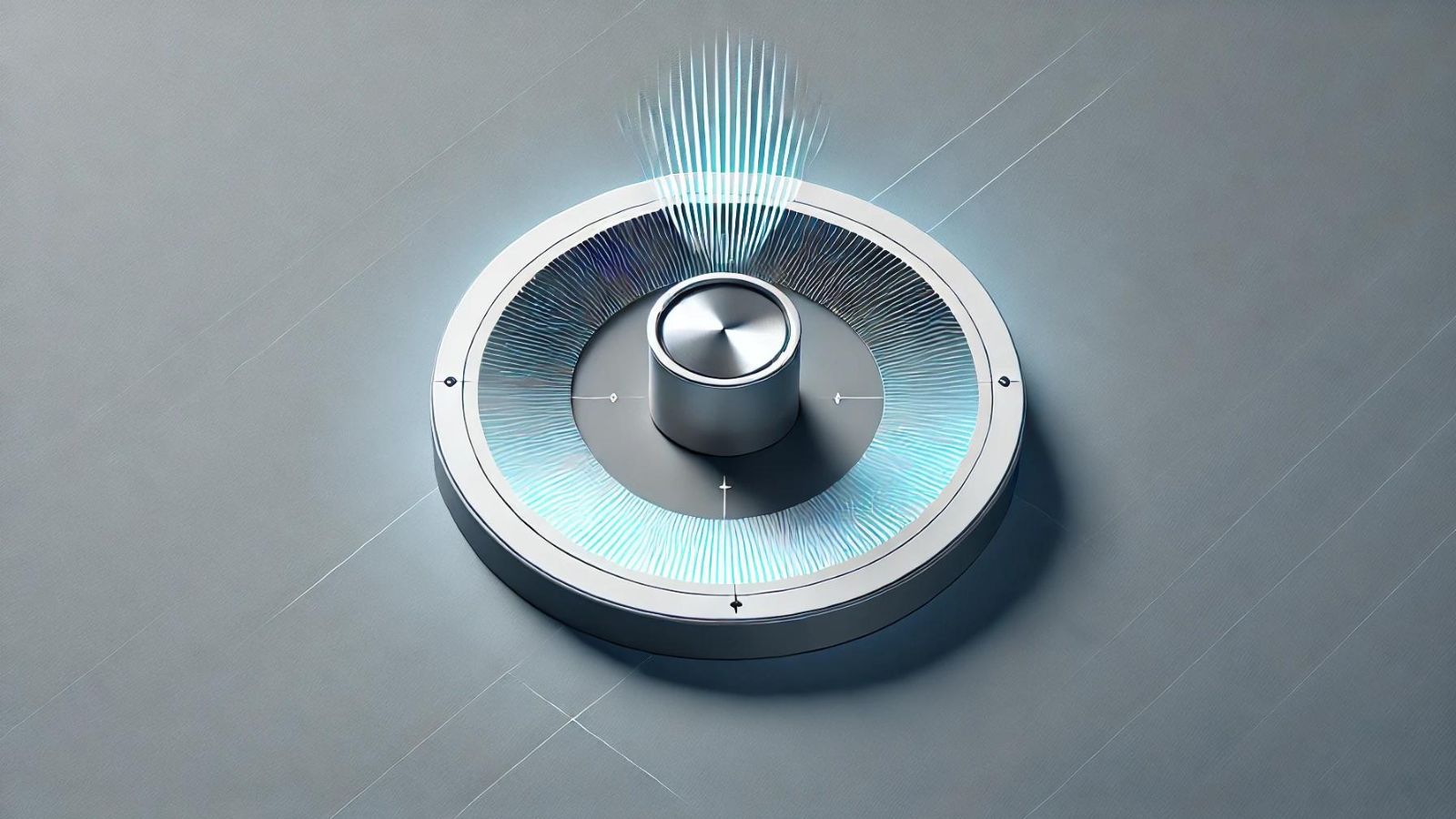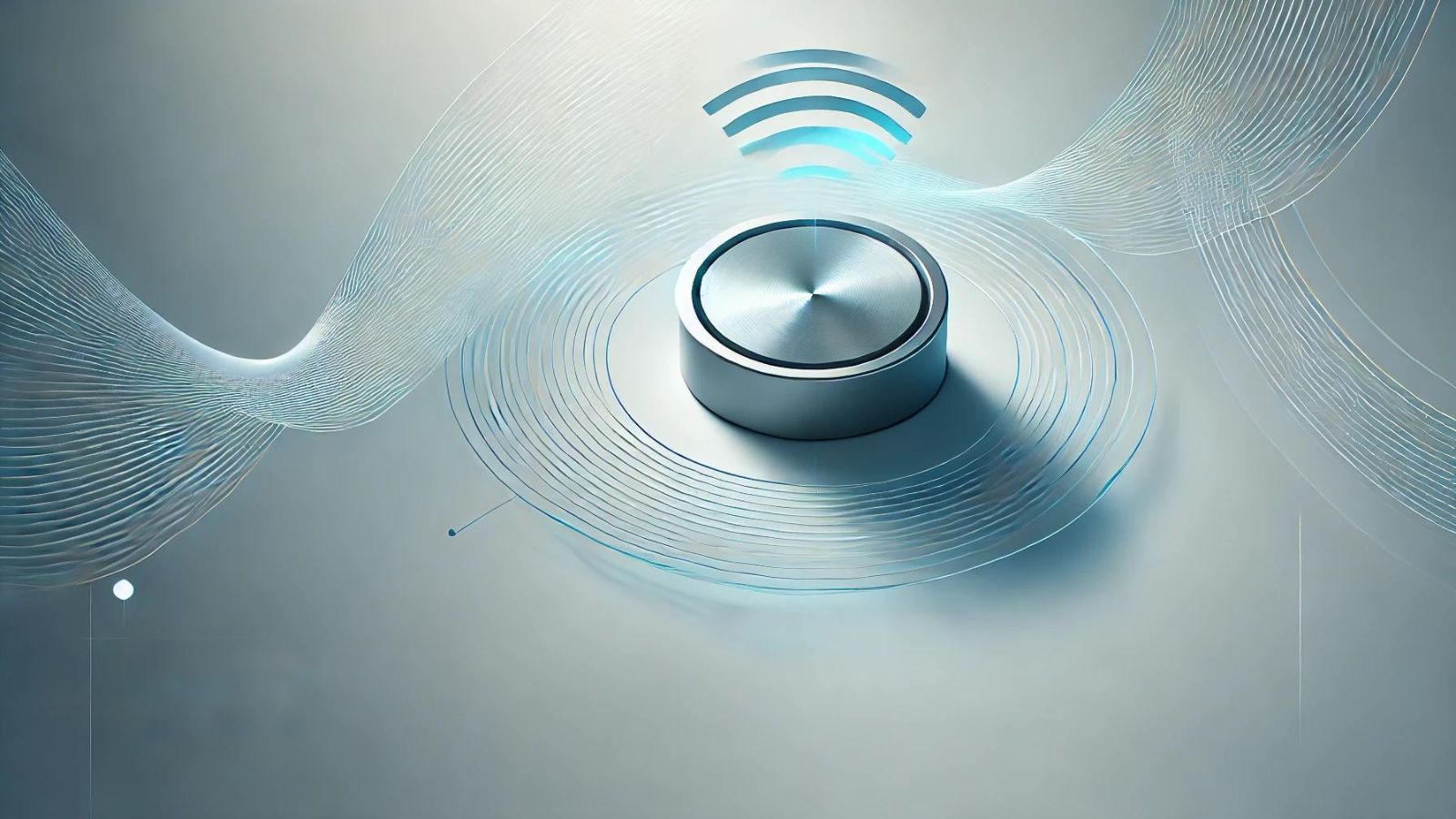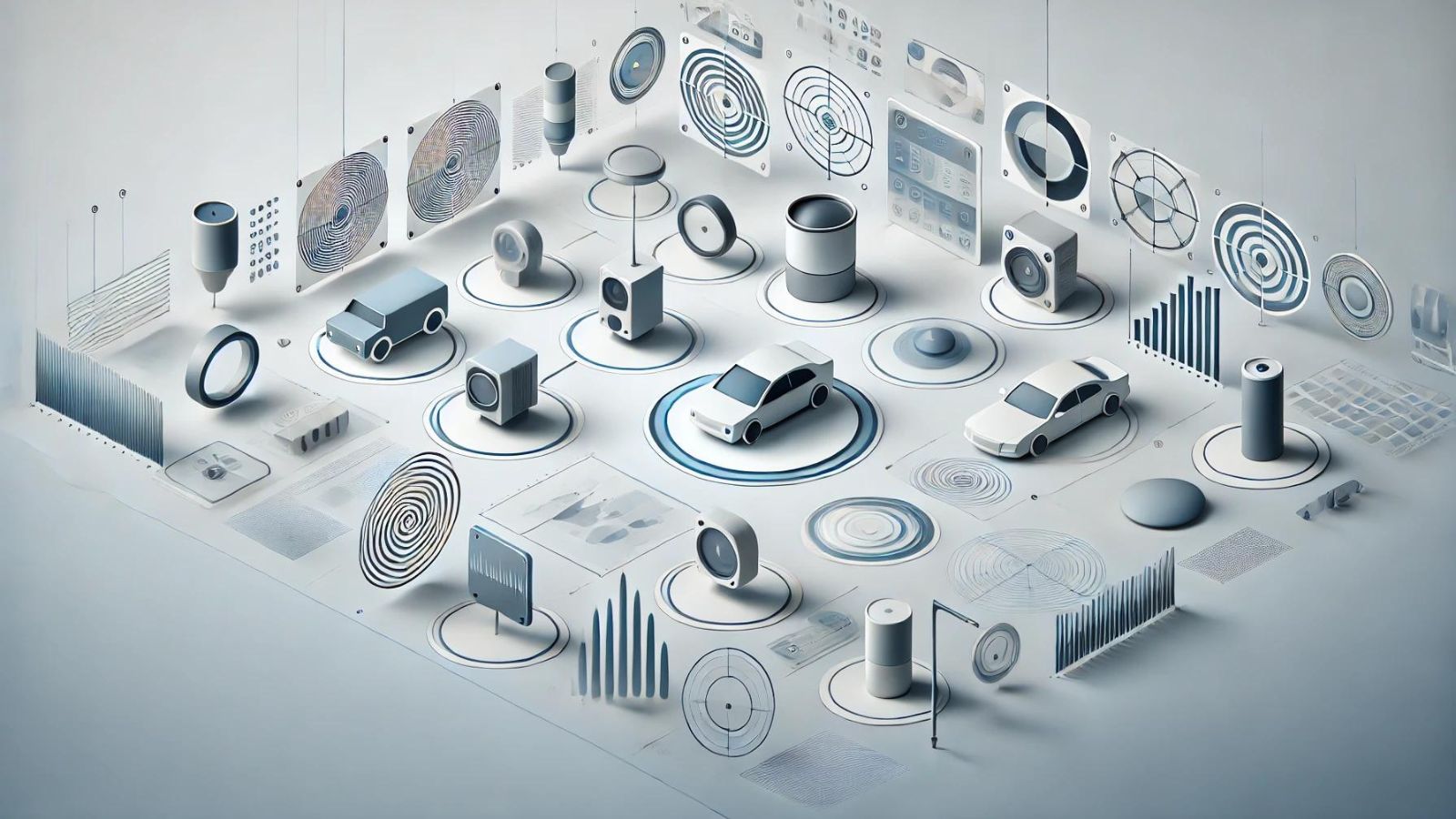A Detailed Guide to Ultrasonic Sensors
Published by Amitabh Verma on 3rd Oct 2024

Have you ever wondered how robots navigate their surroundings or how your car's parking sensors work? The answer lies in ultrasonic sensors, incredible devices that use sound waves to detect objects and measure distances. These nifty gadgets have a huge impact on various fields, from robotics to industrial automation, making our lives easier and safer.
Understanding Ultrasonic Sensor Technology
In this guide, you'll dive into the world of ultrasonic sensors and learn how they tick. We'll cover the basics of their technology, including how they use the speed of sound for distance calculation. You'll also discover tips for designing with these sensors, ways to overcome common challenges, and their key applications. We'll even compare ultrasonic sensors to other sensing technologies, helping you understand when they're the best choice for your projects, whether you're tinkering with an Arduino or working on cutting-edge proximity detection systems. Let's dive into how they work and why they're so useful.
The Science Behind Ultrasonic Waves
Ultrasonic sensors use sound waves that are too high-pitched for humans to hear. These waves typically range from 20 kHz to 65 kHz. The cool thing about these waves is that they travel through air at a known speed - about 343 meters per second in dry air at 20°C (68°F). This consistent speed is key to how ultrasonic sensors calculate distances.
Emission and Reception of Ultrasonic Pulses
The heart of an ultrasonic sensor is its transducer, which acts like both a speaker and a microphone. Here's how it works:
- The transducer sends out a short burst of ultrasonic waves.
- These waves travel through the air until they hit an object.
- The waves bounce off the object and return to the sensor.
- The same transducer that sent the waves now picks up the returning echo.
This process happens incredibly fast - we're talking about microseconds here!
Time-of-Flight Measurement Technique
The magic happens in how ultrasonic sensors measure distance. They use a clever trick called the Time-of-Flight (ToF) technique. Here's how it works:
- The sensor measures the time it takes for the sound wave to go out and come back.
- It then uses this formula: Distance = (Time x Speed of sound) / 2
The reason we divide by 2 is that the sound wave travels to the object and back, so we need to halve the total distance to get the actual distance to the object.
This simple yet effective method allows ultrasonic sensors to measure distances with impressive accuracy. In fact, some sensors can measure distances up to 5 meters away with millimeter-level precision!
Ultrasonic sensors are fantastic for projects involving Arduino boards or other microcontrollers. They're great for building robots that can navigate around obstacles or creating smart parking systems. The best part? They work in all lighting conditions because they rely on sound, not light.
However, it's worth noting that factors like temperature and humidity can affect the speed of sound, which might slightly impact the accuracy of measurements. But for most applications, these sensors provide more than enough precision to get the job done.

Designing with Ultrasonic Sensors
Ultrasonic sensors are crucial in various projects, from simple Arduino setups to complex robotics. Choosing the right sensor involves considering factors like range, accuracy, and environmental conditions. While interfacing with microcontrollers is straightforward, proper sensor placement and mounting are key to accuracy. Challenges like temperature effects, interference, and cross-talk can be overcome with techniques such as temperature compensation, TDMA, and careful calibration.
Selecting the Right Sensor for Your Application
When you're working on a project involving ultrasonic sensors, picking the right one is crucial. You need to consider factors like the measurement range, accuracy, and environmental conditions. For instance, if you're building a robot that needs to navigate around obstacles, you might want a sensor with a range of about 2 meters and a narrow beam width for better precision.
Some sensors, like the HC-SR04, are popular for Arduino projects due to their low cost and ease of use. However, they might not be the best choice for all applications. If you need more reliability, especially in harsh environments, you might want to look into sensors with features like weather resistance or condensation control.
Interfacing Ultrasonic Sensors with Microcontrollers
Hooking up an ultrasonic sensor to a microcontroller like Arduino is pretty straightforward. Most sensors have four pins: VCC (power), GND (ground), TRIG (trigger), and ECHO (echo). The TRIG pin is used to send out the ultrasonic pulse, while the ECHO pin receives the reflected signal.
Here's a quick rundown of how it works:
- You send a short pulse (about 10 microseconds) to the TRIG pin.
- The sensor sends out a burst of ultrasonic waves.
- These waves bounce off objects and return to the sensor.
- The ECHO pin goes high for the time it takes for the waves to return.
- You measure this time and use the speed of sound to calculate the distance.
Remember, the speed of sound varies with temperature, so for super accurate measurements, you might need to factor that in.
Best Practices for Sensor Placement and Mounting
Where and how you mount your ultrasonic sensor can make or break your project. Here are some tips to keep in mind:
- Make sure the sensor face is perpendicular to the target surface. Even a slight angle can throw off your readings.
- Keep a clear path between the sensor and the target. Obstacles in the way can cause false readings.
- If you're measuring liquid levels, mount the sensor above the highest expected level, considering the sensor's minimum range (usually 2-4 cm).
- For outdoor use, try to shield the sensor from direct sunlight and extreme weather conditions.
- If you're using multiple sensors, space them out to avoid interference. Some sensors have special modes like synchronization or multiplexing to help with this.
- For robotics applications, consider using a servo to move the sensor, giving you a wider field of view.
By following these guidelines, you'll be well on your way to creating reliable and accurate ultrasonic sensing systems for your projects, whether you're building a simple parking sensor or a complex robotics application.
Overcoming Challenges in Ultrasonic Sensing
While ultrasonic sensors are incredibly useful in robotics and Arduino projects, they do face some challenges. Let's explore how you can tackle these issues to get the most out of your ultrasonic sensors.
Dealing with Environmental Factors
Temperature is a big player when it comes to ultrasonic sensor accuracy. As the temperature changes, so does the speed of sound, which can throw off your distance calculations. For every degree Celsius change, the speed of sound varies by about 0.17%. This means that a 20°C temperature swing could lead to errors of several centimeters in your measurements.
To combat this, many high-quality ultrasonic sensors come with built-in temperature compensation. Some even use rapid temperature compensation systems to adjust for quick temperature changes. If you're working on a project that needs to be super accurate, consider using a sensor with this feature or adding an external temperature sensor to your setup.
Humidity and air pressure also affect ultrasonic sensors, but to a lesser extent. At room temperature, humidity doesn't make much difference, but it becomes more significant at higher temperatures. Air pressure changes with altitude can also slightly impact readings, but it's usually not a big concern unless you're working at extreme heights.
Minimizing Interference and Cross-Talk
When you're using multiple ultrasonic sensors or working in an environment with other ultrasonic devices, interference can be a real headache. This is known as cross-talk, and it happens when one sensor picks up signals from another.
To minimize cross-talk, you can use a technique called time division multiple access (TDMA). This is a fancy way of saying you make your sensors take turns. By carefully timing when each sensor sends out its pulse, you can avoid overlap and reduce interference.
Another approach is to use different frequencies for each sensor, known as frequency division multiple access (FDMA). However, this can be tricky and expensive to implement with standard ultrasonic sensors.
Enhancing Accuracy and Reliability
To boost the accuracy and reliability of your ultrasonic sensors, consider these tips:
- Choose the right sensor for your environment. Some sensors are better suited for outdoor use or harsh conditions.
- Pay attention to sensor placement. Make sure the sensor face is perpendicular to the target surface for the best results.
- Use signal processing techniques. Advanced algorithms can help filter out noise and improve accuracy.
- Consider using multiple sensors. This can provide redundancy and help verify readings.
- Regularly calibrate your sensors. This helps maintain accuracy over time.
By understanding these challenges and implementing solutions, you can significantly improve the performance of your ultrasonic sensors in various applications, from simple distance measurement to complex robotics projects.

Key Applications of Ultrasonic Sensors
Ultrasonic sensors have revolutionized various industries with their ability to measure distances and detect objects using sound waves. Let's explore some key areas where these nifty devices are making a big impact.
Industrial Automation and Robotics
In the world of industrial automation, ultrasonic sensors are like the eyes and ears of robots. They help machines navigate their surroundings, avoid obstacles, and perform tasks with incredible precision. For instance, in manufacturing, these sensors guide robotic arms to pick up and place items accurately. They're also great for quality control, detecting product irregularities that might slip past human eyes.
Imagine a robot zipping around a warehouse, using ultrasonic sensors to dodge obstacles and find the right items to pick. It's like giving machines a superpower to "see" without actually seeing!
Automotive Safety Systems
When it comes to making cars safer, ultrasonic sensors are the unsung heroes. You know those parking assist features that help you squeeze into tight spots? That's ultrasonic sensors at work! They measure the distance between your car and nearby objects, helping you park like a pro.
But it doesn't stop there. These sensors also play a crucial role in advanced driver-assistance systems (ADAS). They help detect objects around the vehicle, sometimes even working with other systems to apply the brakes and avoid collisions. It's like having an extra set of eyes watching out for you on the road.
Medical Imaging and Diagnostics
In the medical field, ultrasonic sensors have become a game-changer. You've probably heard of ultrasound scans for monitoring pregnancies, but that's just the tip of the iceberg. Doctors use these sensors to create images of internal organs, detect heart problems, and even guide needles during procedures.
The cool thing is, ultrasound is safe and non-invasive. It doesn't use harmful radiation like X-rays, making it a go-to choice for many medical applications. From checking blood flow to examining the eyes before cataract surgery, ultrasonic sensors are helping doctors diagnose and treat patients more effectively.
Environmental Monitoring
Ultrasonic sensors are also making waves in environmental monitoring. They're used to measure things like wind speed, rainfall, and even air quality. In agriculture, these sensors help farmers keep an eye on soil moisture, making sure crops get just the right amount of water.
In smart cities, ultrasonic sensors monitor water levels in rivers and lakes, helping prevent floods and manage water resources better. It's like having a high-tech weather station that never sleeps!
Comparing Ultrasonic Sensors to Other Sensing Technologies
Ultrasonic and infrared sensors have distinct advantages in object detection. Ultrasonic sensors excel in accurate distance measurement and work well in various conditions, while infrared sensors offer faster response times. When compared to capacitive sensors, ultrasonic sensors are versatile for detecting different materials, but capacitive sensors are better for thin materials. Ultrasonic sensors are cost-effective and work well in harsh environments, though they have limitations with sound-absorbing materials and temperature changes.
Ultrasonic vs. Infrared Sensors
When it comes to object detection, ultrasonic sensors and infrared sensors each have their strengths. Ultrasonic sensors use sound waves to detect objects, making them great for measuring distances accurately. They're not affected by color or transparency, which is super handy in robotics and Arduino projects. On the flip side, infrared sensors use light to detect objects. They're faster at responding, which is great for things like motion detection.
If you're working on a project that needs to measure distance precisely, ultrasonic sensors are your best bet. They're awesome at handling dusty or foggy conditions where infrared sensors might struggle. However, if you need something that reacts quickly, like for a security system, infrared sensors might be the way to go.
Ultrasonic vs. Capacitive Sensors
Now, let's talk about ultrasonic sensors compared to capacitive sensors. Ultrasonic sensors are champs at detecting a wide range of materials, from metal to plastic to liquids. They use the speed of sound to calculate distances, which makes them super versatile. Capacitive sensors, on the other hand, are incredibly sensitive to small changes in thickness. They're great for detecting even the thinnest labels or materials.
If you're working on a project that involves detecting different types of objects or measuring liquid levels, ultrasonic sensors are probably your best choice. But if you need to detect super thin materials or tiny changes in thickness, capacitive sensors might be the way to go.
Pros and Cons of Ultrasonic Sensing
Ultrasonic sensors have some cool advantages. They're not affected by light conditions, so they work great in dark environments. They're also pretty good at handling dust and moisture, which makes them tough little cookies in harsh conditions. Plus, they're relatively inexpensive, which is always a bonus for your Arduino projects.
However, they do have some limitations. They can struggle with soft, sound-absorbing materials, and their accuracy can be affected by temperature changes. They also have a limited detection range, usually up to about 10 meters. But for most robotics and proximity detection applications, that's plenty of range to work with.
In the end, choosing the right sensor depends on your specific project needs. Ultrasonic sensors are versatile workhorses that can handle a wide range of tasks, making them a solid choice for many applications in robotics and Arduino projects.
Conclusion
Ultrasonic sensors have a huge impact on various fields, from robotics to medical imaging. These clever devices use sound waves to detect objects and measure distances, making them incredibly versatile tools. Their ability to work in different conditions and their relatively low cost make them a top choice for many projects, whether you're building a simple parking sensor or a complex industrial robot.
As technology keeps moving forward, ultrasonic sensors are likely to play an even bigger role in our lives. From making our cars safer to helping doctors diagnose illnesses, these sensors are opening up new possibilities in many areas. While they do have some limitations, like struggling with soft materials or being affected by temperature changes, their strengths often outweigh these drawbacks. In the end, ultrasonic sensors are powerful tools that will keep helping us push the boundaries of what's possible in technology and science.
